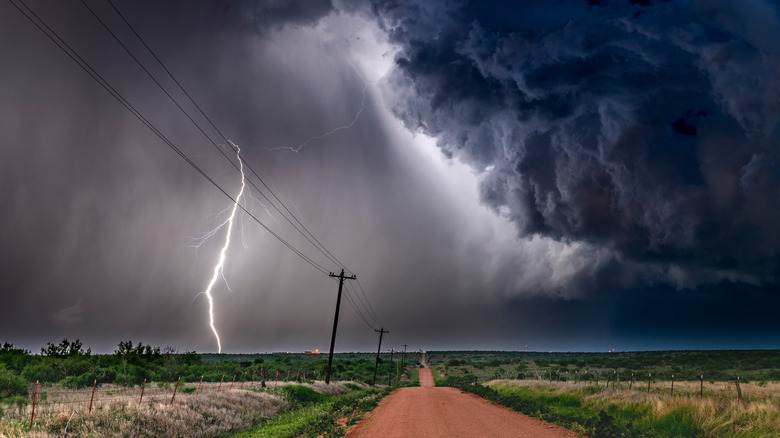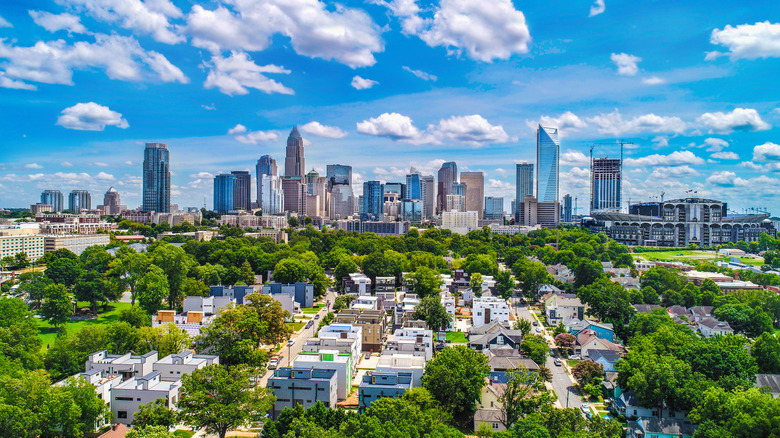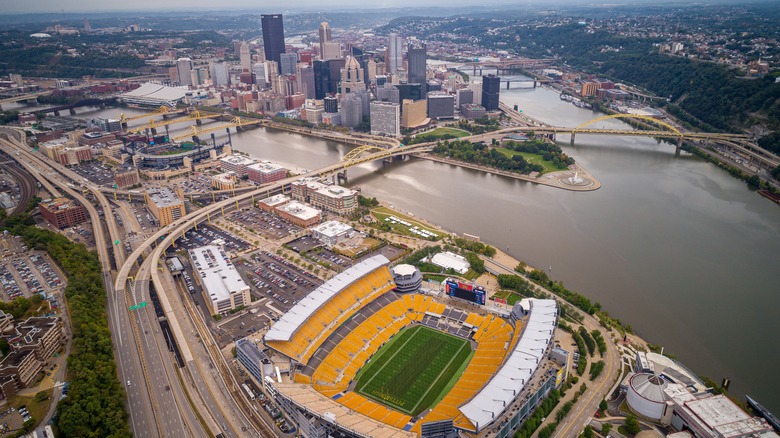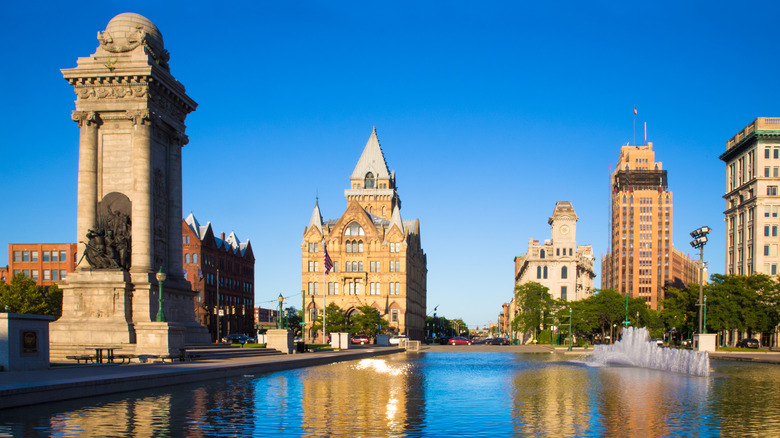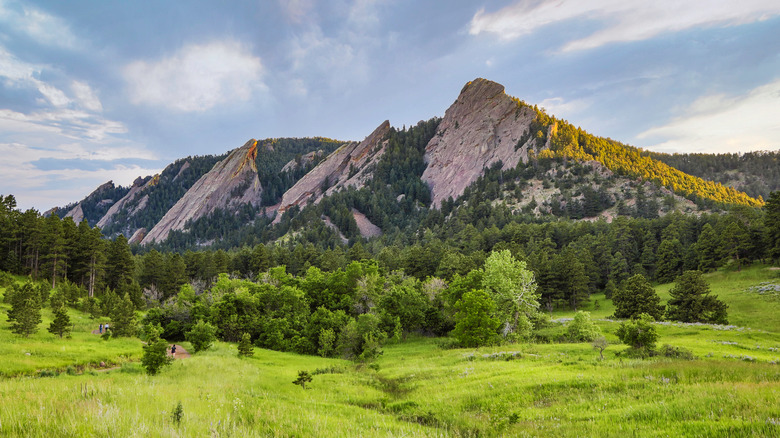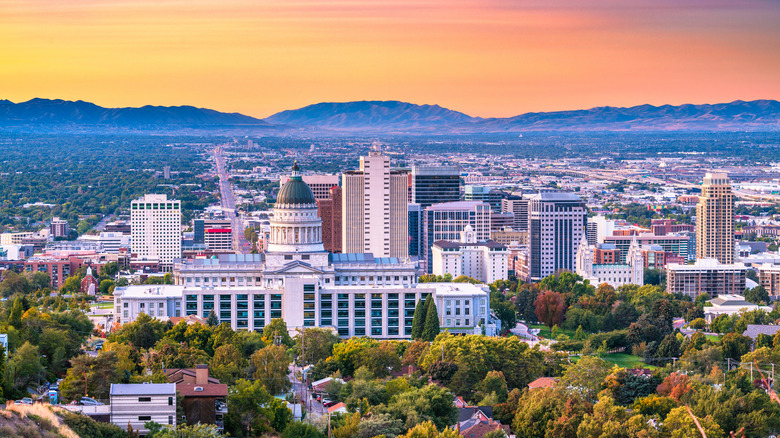The 5 Safest Cities In The US Least Prone To Natural Disasters
One of the hardest circumstances we have to endure in life is natural disasters. These types of conditions are often unpredictable and can result in a lot of damage to both property and people. From tornadoes to hurricanes to earthquakes to floods, every natural disaster also has its own category. These categories represent how severe the particular event is. However, no matter the category, they can be extremely dangerous and life-threatening.
According to the National Centers for Environmental Information, since 1980, the United States alone has suffered over 300 severe natural disasters. That averages out to around eight events or more annually. Furthermore, the amount of damage these events have caused is well over $2 trillion. Of course, the exact location you reside in depends on which natural disaster you're more likely to encounter.
For example, those located in coastal areas will likely encounter a hurricane at some point or another more than any other. Tornadoes, on the other hand, can form almost anywhere in non-elevated areas; however, they're more common in the central part of the U.S. While no location is completely exempt from natural disaster, there are some places where you're less likely to encounter one of these major events. Here are the five safest cities in the U.S. least prone to natural disasters.
1. Charlotte, North Carolina
Starting over on the lower east coast, one of the safest cities you can live in is Charlotte, North Carolina. This city is far enough inland to be less affected by natural disaster. While it's true this southern state has seen its fair share of hurricanes, Charlotte isn't usually bothered by storms. According to Coverage.com, this is because Charlotte's nearby neighbors are surrounded by water. The water there acts as a regulator, keeping the weather in Charlotte calmer.
In addition, though, it unfortunately also makes flooding more likely to happen in Charlotte than any other natural disaster. However, the chances of a flood happening are overall still significantly low. In general, the weather in this southern city is as one might expect: In the hot summer months, specifically in July, the weather reaches a high of around 89 degrees Fahrenheit (via Weather Spark). In the colder winter months, the average low is just at 34 F, which further allows natural storms to remain at bay.
2. Pittsburgh, Pennsylvania
Up north on the east coast is where the state of Pennsylvania is located. While it's still near the coastal regions, Pittsburgh is another city less prone to natural disasters. Much like Charlotte, Pittsburgh is located far enough away from the coast that a natural disaster, such as a hurricane, isn't particularly common. However, once upon a time, this area did have to worry tremendously about flooding. Thankfully, according to Clever Real Estate, this fear subsided back in 1936. During this time, Pittsburgh was hit with a huge flood, which led to dams and flood control barriers being put into place.
Aside from flooding, this city was hit with one earthquake in 2011 that most didn't even feel. Nonetheless, while this is a relatively large city, nothing major typically happens here in regards to the weather. In fact, Pittsburgh's weather has been known to be boring. As per U.S. Climate Data, the hottest it gets is around 83 degrees Fahrenheit in the hot July summer. As for the cold weather conditions, it can get pretty chilly with a low of 21 F in January. So, while this weather may not be anything spectacular, at least you're almost guaranteed to be safe.
3. Syracuse, New York
One more city on the east coast that's less likely to be hit by a major storm is Syracuse, New YOrk. This may come as a surprise for many as much of the state of New York is surrounded by water. However, still, not much happens in Syracuse. According to Money Inc., this cozy city is safe from wildfires, hurricanes, earthquakes, and flooding. Of course, there is always your average rain or thunderstorm, but you can't get away from that no matter where you live.
As Weather Spark states, the hottest it typically gets in this area is about 82 degrees Fahrenheit in the hot summer months. The winter months, however, in this area are exceptionally cold. Normally, it doesn't get below 16 F, but it has reached as low as -1 F. This is due to the snowy winter months in Syracuse. It's almost uncommon for it to not snow in this region during the early and late months of the year. So, if you're open to some cold snowy weather as opposed to disasters, Syracuse may be the place for you.
4. Boulder, Colorado
Closer to the west coast, the next safest city on our list is located in Colorado. The city of Boulder is less prone to natural disasters for a few different reasons. The biggest reason being, according to Clever Real Estate, is how elevated this city is, along with its surrounding mountains. Hurricanes are the least likely natural event to occur for this reason, and tornadoes are kept at a bare minimum. Colorado also sees fewer earthquakes than other states like California or Alaska, per the Colorado Geological Society.
As per Boulder's official website, the highest temperature this city usually sees is 87 degrees Fahrenheit in July, which may be surprising considering Colorado is a high desert state with an altitude level of 5,430 feet above standard sea level. Fortunately though, for those that live or visit Colorado, the humidity is low. As for the winter months, Boulder experiences a daytime high average of 45 F.
5. Salt Lake City, Utah
Lastly, one more city that's less likely to see natural weather disasters is Salt Lake City, Utah. While its population was just over 200,000 as of July 2021, according to the U.S. Census Bureau, the surrounding metropolitan area brings that number to over 1.215 million (via Census Reporter).
Salt Lake City is located far enough away from the west coast that tropical events such as hurricanes don't occur. Much like its neighboring states, Utah has a high elevation that keeps tornadoes at a far distance. In fact, the last tornado that hit Salt Lake City occurred over two decades ago in 1999, per the National Weather Service.
The coldest it gets in Salt Lake City is around 23 degrees Fahrenheit in January (via Current Results). Cold days like these occur about 21 times a year. In contrast, it gets relatively warm in July with an average high of 94 F. Usually, however, it's only in the 90s for a few days out of the year. While the weather may vary from one season to the next, the natural disasters in Salt Lake City are kept at a safe distance, making this U.S. city one of the safest places to live in.
